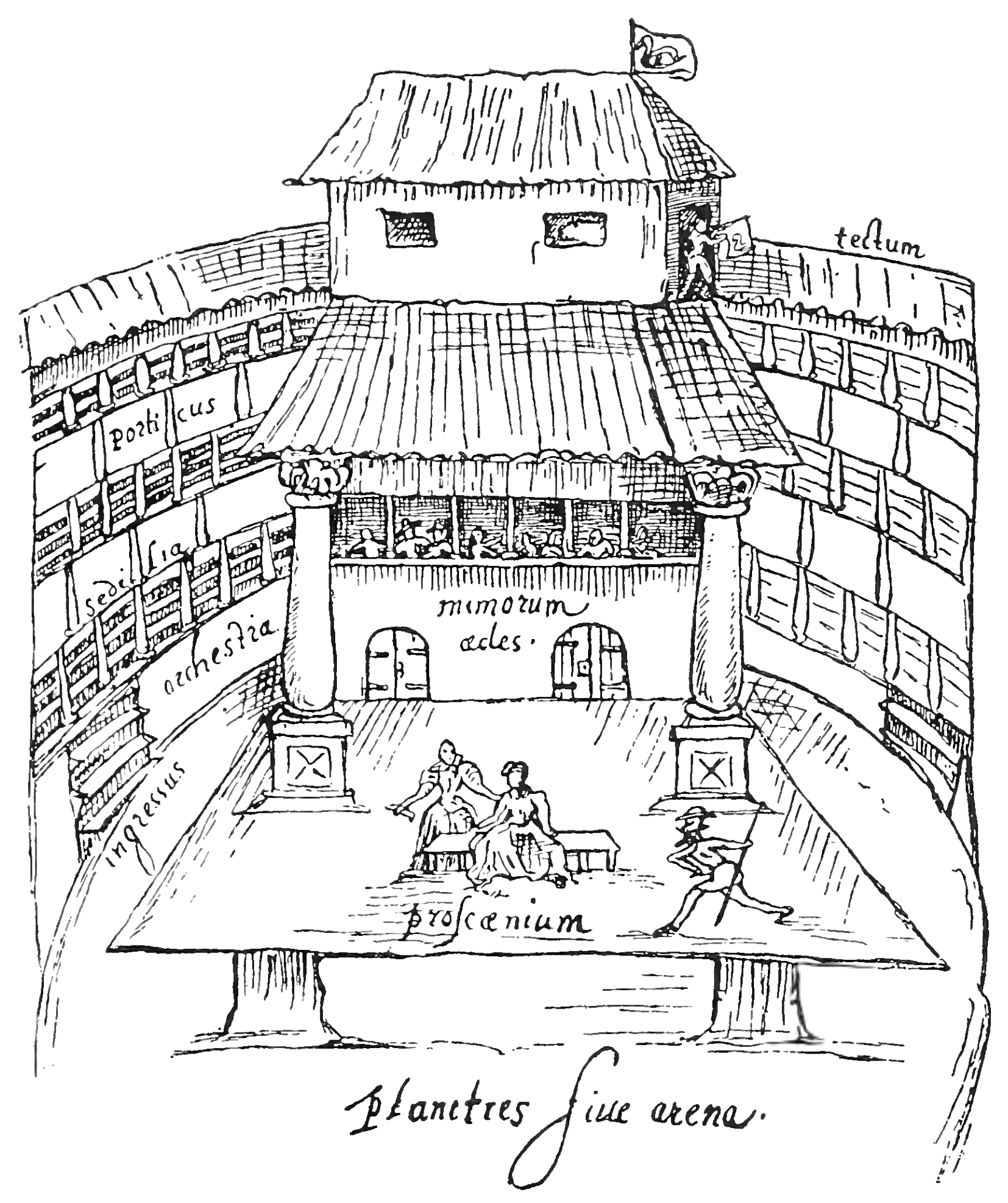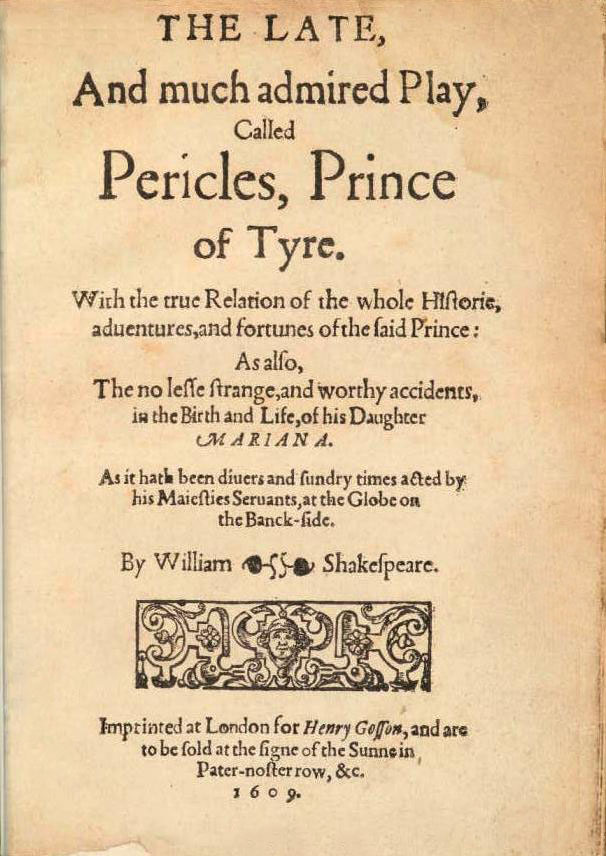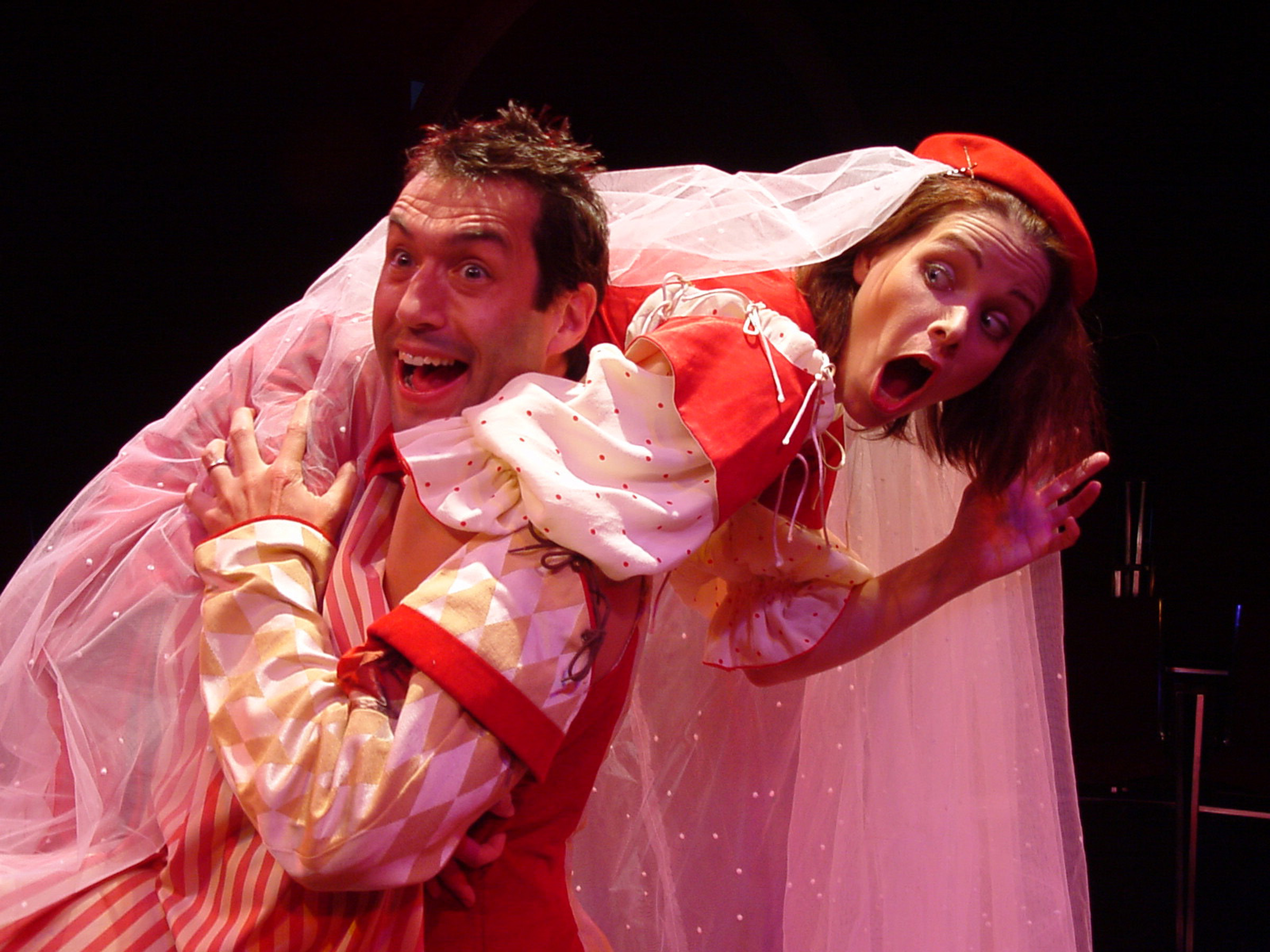|
Valentine Simmes
Valentine Simmes ( fl. 1585 – 1622) was an Elizabethan era and Jacobean era printer; he did business in London, "on Adling Hill near Bainard's Castle at the sign of the White Swan." Simmes has a reputation as one of the better printers of his generation, and was responsible for several quartos of Shakespeare's plays. Early_texts_of_Shakespeare's_works.html"_;"title="ee:_Early_texts_of_Shakespeare's_works">ee:_Early_texts_of_Shakespeare's_works. Nothing_is_known_of_Simmes's_early_life_or_personal_history._He_was_active_as_a_printer_starting_in_1585. _Shakespeare In_an_eight-year_period_from_ ee:_Early_texts_of_Shakespeare's_works.">Early_texts_of_Shakespeare's_works.html"_;"title="ee:_Early_texts_of_Shakespeare's_works">ee:_Early_texts_of_Shakespeare's_works. Nothing_is_known_of_Simmes's_early_life_or_personal_history._He_was_active_as_a_printer_starting_in_1585. _Shakespeare In_an_eight-year_period_from_1597_in_literature">1597_through_ ee:_Early_texts_of_Shakespeare's_works.">Ea ... [...More Info...] [...Related Items...] OR: [Wikipedia] [Google] [Baidu] |
Floruit
''Floruit'' (; abbreviated fl. or occasionally flor.; from Latin for "they flourished") denotes a date or period during which a person was known to have been alive or active. In English, the unabbreviated word may also be used as a noun indicating the time when someone flourished. Etymology and use la, flōruit is the third-person singular perfect active indicative of the Latin verb ', ' "to bloom, flower, or flourish", from the noun ', ', "flower". Broadly, the term is employed in reference to the peak of activity for a person or movement. More specifically, it often is used in genealogy and historical writing when a person's birth or death dates are unknown, but some other evidence exists that indicates when they were alive. For example, if there are wills attested by John Jones in 1204, and 1229, and a record of his marriage in 1197, a record concerning him might be written as "John Jones (fl. 1197–1229)". The term is often used in art history when dating the career ... [...More Info...] [...Related Items...] OR: [Wikipedia] [Google] [Baidu] |
Nicholas Ling
Nicholas Ling (fl.1570–1607) was a London publisher, bookseller, and editor who published several important Elizabethan works, including the first and second quartos of Shakespeare's ''Hamlet''. Ling was the son of John Lynge, a parchment maker from Norwich. He was apprenticed to Henry Bitteman in 1570 and was admitted to the Stationers' Company as a "freeman" (full member) in 1578. He generally partnered with other publishers. In 1597 he edited ''Politeuphuia, or Wits Commonwealth'', a collection of prose quotations. He has also been credited by some critics with editing ''England's Helicon'' (1600), a collection of Elizabethan lyric poems. In 1603 he collaborated with another bookseller, John Trundell, to publish the first quarto of ''Hamlet''. This edition, printed by Valentine Simmes, has been widely condemned as a wildly inaccurate and badly printed travesty of the play. A few months later James Roberts printed the much more substantial and accurate second quarto accord ... [...More Info...] [...Related Items...] OR: [Wikipedia] [Google] [Baidu] |
An Humorous Day's Mirth
''An Humorous Day's Mirth'' is an Elizabethan era stage play, a comedy by George Chapman, first acted in 1597 and published in 1599. Algernon Charles Swinburne called Chapman's play All Fools one of the finest comedies in English. "The plot is intricate and ingenious and shows that Chapman had been taking lessons of Jonson's masters, Plautus and Terence." Performance ''An Humorous Day's Mirth'' was performed by the Admiral's Men at the Rose Theatre; it has been identified with the "Humours" play that the company acted on Thursday 11 May 1597, as described in a contemporary letter to Dudley Carleton from John Chamberlain. Philip Henslowe's diary, which covers performances at the Rose at this time, marks the play as 'ne' on this date while Chamberlain's comment that he had been drawn to the play by the 'common applause' suggests that he saw one of the five performances between 11 May and before the writing of the letter which is dated 11 June 1597. Chamberlain described the ... [...More Info...] [...Related Items...] OR: [Wikipedia] [Google] [Baidu] |
John Day (dramatist)
John Day (1574–1638?) was an English dramatist of the Elizabethan and Jacobean periods. Life He was born at Cawston, Norfolk, and educated at Ely. He became a sizar of Caius College, Cambridge, in 1592, but was expelled in the next year for stealing a book. He became one of Philip Henslowe's playwrights, collaborating with Henry Chettle, William Haughton, Thomas Dekker, Richard Hathwaye and Wentworth Smith. There are 22 plays to which he is linked. However his almost incessant activity does not seem to have paid, to judge by the small loans, of five shillings and even two shillings, that he obtained from Henslowe. Little is known of his life beyond these small details, and disparaging references by Ben Jonson in 1618/19, describing him, (with Dekker and Edward Sharpham) as a "rogue" and (with Thomas Middleton and Gervase Markham) as a "base fellow". It may be indicative of his abilities that of all the writers who did a substantial amount of work for Henslowe's companies ... [...More Info...] [...Related Items...] OR: [Wikipedia] [Google] [Baidu] |
English Renaissance Theatre
English Renaissance theatre, also known as Renaissance English theatre and Elizabethan theatre, refers to the theatre of England between 1558 and 1642. This is the style of the plays of William Shakespeare, Christopher Marlowe and Ben Jonson. Background The term ''English Renaissance theatre'' encompasses the period between 1562—following a performance of ''Gorboduc'', the first English play using blank verse, at the Inner Temple during the Christmas season of 1561—and the ban on theatrical plays enacted by the English Parliament in 1642. In a strict sense "Elizabethan" only refers to the period of Queen Elizabeth's reign (1558–1603). ''English Renaissance theatre'' may be said to encompass ''Elizabethan theatre'' from 1562 to 1603, '' Jacobean theatre'' from 1603 to 1625, and '' Caroline theatre'' from 1625 to 1642. Along with the economics of the profession, the character of the drama changed towards the end of the period. Under Elizabeth, the drama was a unified ... [...More Info...] [...Related Items...] OR: [Wikipedia] [Google] [Baidu] |
Pericles, Prince Of Tyre
''Pericles, Prince of Tyre'' is a Jacobean play written at least in part by William Shakespeare and included in modern editions of his collected works despite questions over its authorship, as it was not included in the First Folio. It was published in 1609 as a quarto, was not included in Shakespeare's collections of works until the third folio, and the main inspiration for the play was Gower's ''Confessio Amantis''. Various arguments support the theory that Shakespeare was the sole author of the play, notably in DelVecchio and Hammond's Cambridge edition of the play, but modern editors generally agree that Shakespeare was responsible for almost exactly half the play — 827 lines — the main portion after scene 9 that follows the story of Pericles and Marina. Modern textual studies suggest that the first two acts, 835 lines detailing the many voyages of Pericles, were written by a collaborator, who may well have been the victualler, panderer, dramatist and pamphleteer Geo ... [...More Info...] [...Related Items...] OR: [Wikipedia] [Google] [Baidu] |
The Pattern Of Painful Adventures
''The Pattern of Painful Adventures'' (1576) is a prose novel. A later edition, printed in 1607 by Valentine Simmes and published by Nathaniel Butter, was drawn on by William Shakespeare for his play ''Pericles, Prince of Tyre''. There was at least one intermediate edition, around 1595. It was a translation by Lawrence Twine of the tale of Apollonius of Tyre from John Gower's ''Confessio Amantis ''Confessio Amantis'' ("The Lover's Confession") is a 33,000-line Middle English poem by John Gower, which uses the confession made by an ageing lover to the chaplain of Venus as a frame story for a collection of shorter narrative poems. Accord ...'' (in Middle English verse). It is also said to be translated from a French version. William Henry Schofield stated that Shakespeare used both sources. William Henry Schofield, ''English Literature from the Norman Conquest to Chaucer'', p. 306. Notes External linksBritish Library - Shakespeare Quartos William Shakespeare 1576 novel ... [...More Info...] [...Related Items...] OR: [Wikipedia] [Google] [Baidu] |
Sir John Oldcastle
''Sir John Oldcastle'' is an Elizabethan play about John Oldcastle, a controversial 14th-/15th-century rebel and Lollard who was seen by some of Shakespeare's contemporaries as a proto-Protestant martyr. Publication The play was originally published anonymously in 1600 (Q1), printed by Valentine Simmes for the bookseller Thomas Pavier. In 1619, a new edition (Q2) carried an attribution to William Shakespeare. The diary of Philip Henslowe records that the play was written by Anthony Munday, Michael Drayton, Richard Hathwaye and Robert Wilson. (An entry in Henslowe's Diary records a later payment to Drayton for a second part to the play, which has not survived; because of this fact, the extant play has sometimes been called ''Sir John Oldcastle, Part I'' or ''1 Sir John Oldcastle''.) In 1664, the play was one of the seven dramas added to the second impression of the Shakespeare Third Folio by publisher Philip Chetwinde. Historical figure Like other subjects of Elizabethan h ... [...More Info...] [...Related Items...] OR: [Wikipedia] [Google] [Baidu] |
Thomas Pavier
Thomas Pavier (died 1625) was a London publisher and bookseller of the early seventeenth century. His complex involvement in the publication of early editions of some of William Shakespeare, Shakespeare's plays, as well as plays of the Shakespeare Apocrypha, has left him with a "dubious reputation." Life and work Pavier came to the business of publishing in an unusual way: instead of serving the normal apprenticeship in the Worshipful Company of Stationers and Newspaper Makers, Stationers Company, he was one of several young men who transferred to the Stationers from the Worshipful Company of Drapers, Drapers Company on 3 June 1600. Pavier had served an apprenticeship under William Barley, a draper who doubled as a bookseller. Pavier was able to set himself up in business that year; his shop was located at the sign of the Cat and Parrots, "over against Pope's Head Alley" in Cornhill, London, Cornhill. Over the course of his quarter-century career, Pavier grew rich by publishing ... [...More Info...] [...Related Items...] OR: [Wikipedia] [Google] [Baidu] |
The Taming Of The Shrew
''The Taming of the Shrew'' is a comedy by William Shakespeare, believed to have been written between 1590 and 1592. The play begins with a framing device, often referred to as the induction, in which a mischievous nobleman tricks a drunken tinker named Christopher Sly into believing he is actually a nobleman himself. The nobleman then has the play performed for Sly's diversion. The main plot depicts the courtship of Petruchio and Katherina, the headstrong, obdurate shrew. Initially, Katherina is an unwilling participant in the relationship; however, Petruchio "tames" her with various psychological and physical torments, such as keeping her from eating and drinking, until she becomes a desirable, compliant, and obedient bride. The subplot features a competition between the suitors of Katherina's younger sister, Bianca, who is seen as the "ideal" woman. The question of whether the play is misogynistic has become the subject of considerable controversy, particularly among mode ... [...More Info...] [...Related Items...] OR: [Wikipedia] [Google] [Baidu] |
Henry IV, Part 1
''Henry IV, Part 1'' (often written as ''1 Henry IV'') is a history play by William Shakespeare, believed to have been written no later than 1597. The play dramatises part of the reign of King Henry IV of England, beginning with the battle at Homildon Hill late in 1402, and ending with King Henry's victory in the Battle of Shrewsbury in mid-1403. In parallel to the political conflict between King Henry and a rebellious faction of nobles, the play depicts the escapades of King Henry's son, Prince Hal (the future King Henry V), and his eventual return to court and favour. ''Henry IV, Part 1'' is the first of Shakespeare's two plays which deal with the reign of Henry IV (the other being '' Henry IV, Part 2''), and the second play in the Henriad, a modern designation for the tetralogy of plays that deal with the successive reigns of Richard II, Henry IV, and Henry V. From its first performance on, it has been an extremely popular work both with the public and critics. Characte ... [...More Info...] [...Related Items...] OR: [Wikipedia] [Google] [Baidu] |





